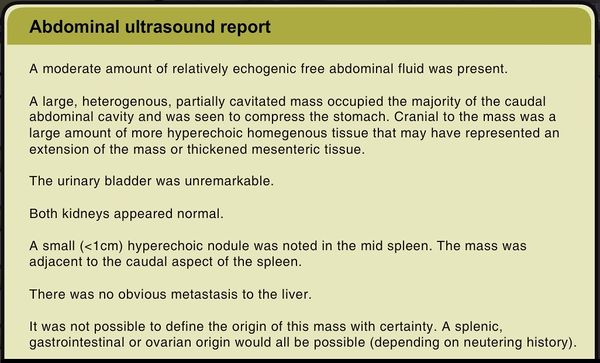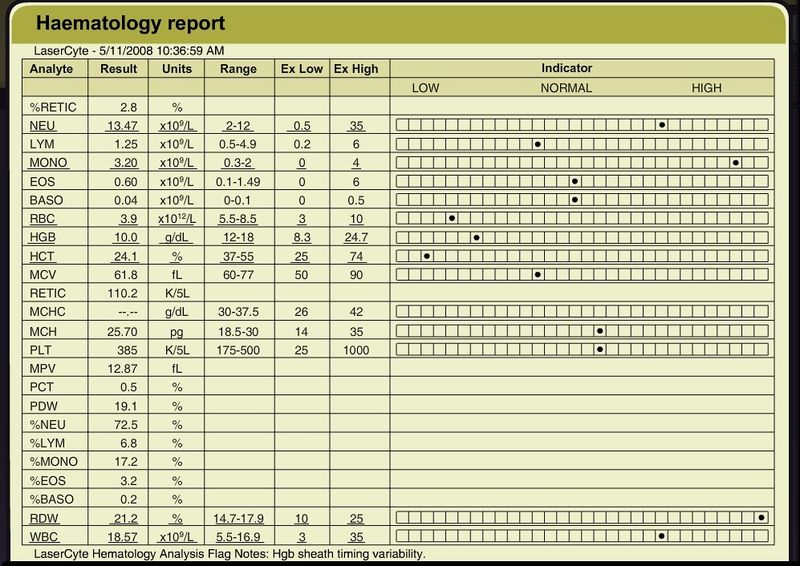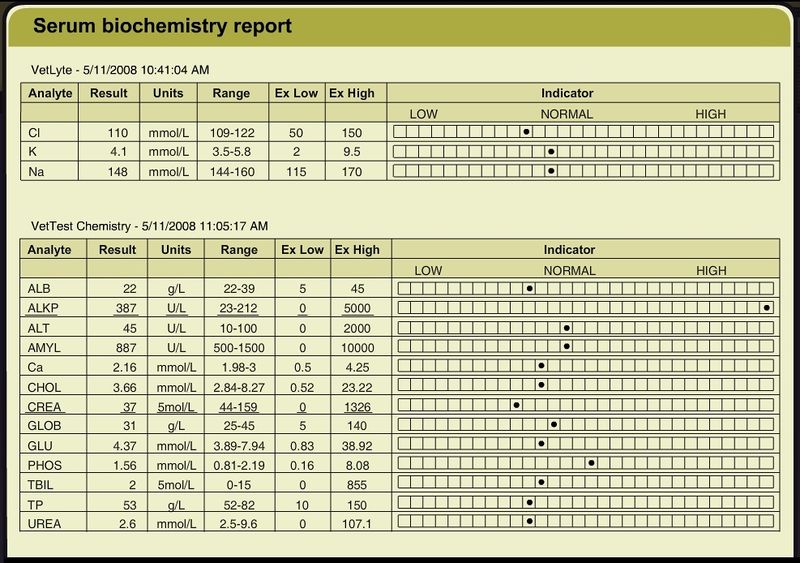Difference between revisions of "Maltese terrier cross with enlarged abdomen"
| Line 122: | Line 122: | ||
<center><WikiQuiz | <center><WikiQuiz | ||
questionnumber="4" | questionnumber="4" | ||
| − | question="" | + | question="You have organized your blood transfusion and are now ready for surgery. Then you realize that you have forgotten to do something. What is it?" |
| − | choice1="" | + | choice1="Ultrasound-guided fine-needle aspirate of the mass to determine if it is malignant or benign " |
| − | choice2="" | + | choice2="Activated clotting time" |
| − | choice3="" | + | choice3="Thoracic radiographs " |
| − | choice4="" | + | choice4="Bone marrow biopsy" |
| − | choice5="" | + | choice5="Options b and c" |
| − | correctchoice=" | + | correctchoice="5" |
| − | feedback1="" | + | feedback1="'''Incorrect'''. This is unlikely to be diagnostic, and even if it is, will not change the treatment, i.e. surgical resection, and may cause unnecessary bleeding. Choose again." |
| − | feedback2="" | + | feedback2="Correct. This is important to test if she is in disseminated intravascular coagulation, and as a reference for postoperative monitoring. It is also of use if the mass is of hepatic origin. However, you also need thoracic radiographs for staging purposes. Choose again." |
| − | feedback3="" | + | feedback3="Correct. You should take thoracic radiographs for staging purposes before surgery for any patient with an abdominal mass. The presence of pulmonary metastatic lesions may change the client’s willingness to treat. However, it would also be ideal to have an activated clotting time before surgery. Choose again." |
| − | feedback4="" | + | feedback4="'''Incorrect'''. This is an unnecessary test for this dog. Choose again" |
| − | feedback5="" | + | feedback5="'''Correct'''." |
image= ""> | image= ""> | ||
</WikiQuiz></center> | </WikiQuiz></center> | ||
Revision as of 18:46, 3 October 2012
Signalment:
- 12-year-old female neutered Maltese Terrier cross
Presenting complaint:
- abdominal enlargement, lethargy, inappetance for 3 months. Your physical exam shows an obviously distended abdomen with a very large (>10 cm diameter) firm palpable abdominal mass, mucous membranes pink but paler than normal, periodontal disease. Otherwise clinical exam within normal limits, and she seems surprisingly alert and responsive. The clients say the abdominal enlargement has only happened in the past month.
100 |
|
1 |
What do you do next? |
| Abdominal ultrasound report |
|---|

|
| PCV and TP report |
|---|

|
| Urinalysis report |
|---|

|
2 |
Review the abdominal ultrasound report, the packed cell volume and total protein report and the urinalysis report. What do you do next? |
| Haematology report |
|---|

|
| Serum biochemistry report |
|---|

|
| Blood donor qualities | |
|---|---|
| a) | healthy, receives yearly physical exam, CBC, UA, biochemistry |
| b) | not been the recipient of a transfusion |
| c) | over 25kg |
| d) | negative for DEA1.1 |
| e) | fully vaccinated, heartworm negative, dogs receiving heartworm prophylaxis |
| f) | screened for Ehrlichia and Babesia (in areas where these occur |
3 |
Your next tests are haematology and serum biochemistry. You give the option of referral for surgery but the clients decline. You are not sure what to expect at surgery so you hire a suction unit and electrocautery unit from a drug company. You ask the clients to bring in their friend's dog so you have a whole blood transfusion on hand if needed. What qualities should you look for in choosing a blood donor for your surgical patient? (Select from the table above.) |
4 |
You have organized your blood transfusion and are now ready for surgery. Then you realize that you have forgotten to do something. What is it? |
5 |
|